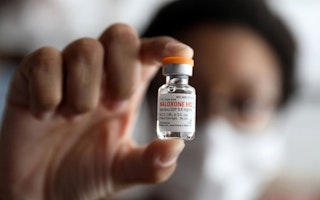When Training People to Prevent Drug Overdoses, Less Can Be More
By Roxanne Saucier
When it comes to health care, often the conventional wisdom is that exercising an abundance of caution is better than acting with haste. We see this when governors quarantine people returning from countries with Ebola outbreaks, even when doing so does little to curb its spread. We see it when doctors order unnecessary tests that add stress and financial burden to an already beleaguered patient. And we see it when well-meaning advocates mandate time-consuming trainings for a procedure that’s actually quite simple.
New research shows that this last scenario applies to naloxone, the miracle medicine that reverses an overdose from drugs like heroin and opioid painkillers. For almost two decades, people who use drugs have been administering naloxone to prevent overdose deaths amongst their peers. Their qualification? A simple five-minute training session.
You might think, as some state legislators seem to [PDF], that if five minutes of training is good, an hour is better. And some people might want a longer training session—for instance, parents of drug users might want more time to talk through their fears about the safety of their children or their concerns about giving them an injection.
But these longer trainings often have the unintended consequence of excluding the most important demographic: drug users themselves. Who wants to sit through hours of training, especially when drug cravings are knocking at your door?
According to research by the San Francisco Department of Health, a training of five minutes or less is enough to teach a person who uses drugs how to administer naloxone to a peer during an emergency. Trainees report feeling comfortable recognizing and responding to an overdose after this brief session, and they retain that knowledge over time.
With decades of experience, we have evidence that efforts to get naloxone into the hands of drug users can lead to fewer overdose deaths communitywide. Even the World Health Organization now recommends these programs. We don’t actually have evidence that distribution to other groups, like parents and police, has the same result. If we want to make an impact, we need to prioritize reaching drug users themselves.
How the trainings are designed is critical. For instance, it seemed like a victory when a county health department in Hillsborough, North Carolina, set up a naloxone distribution program. But few people have come to Hillsborough to take advantage of it—several months into their program, only a handful of kits have been distributed.
Compare this to another program in nearby High Point, where street outreach workers have distributed 235 kits in three months. Training on the street is necessarily brief, and the kits given out in High Point have already resulted in 23 overdose reversals. It’s not that the program at the county health department is bad, but with limited resources, it’s important to be smart about which approach works best.
Roxanne Saucier is a researcher and analyst for the Open Society Public Health Program.

